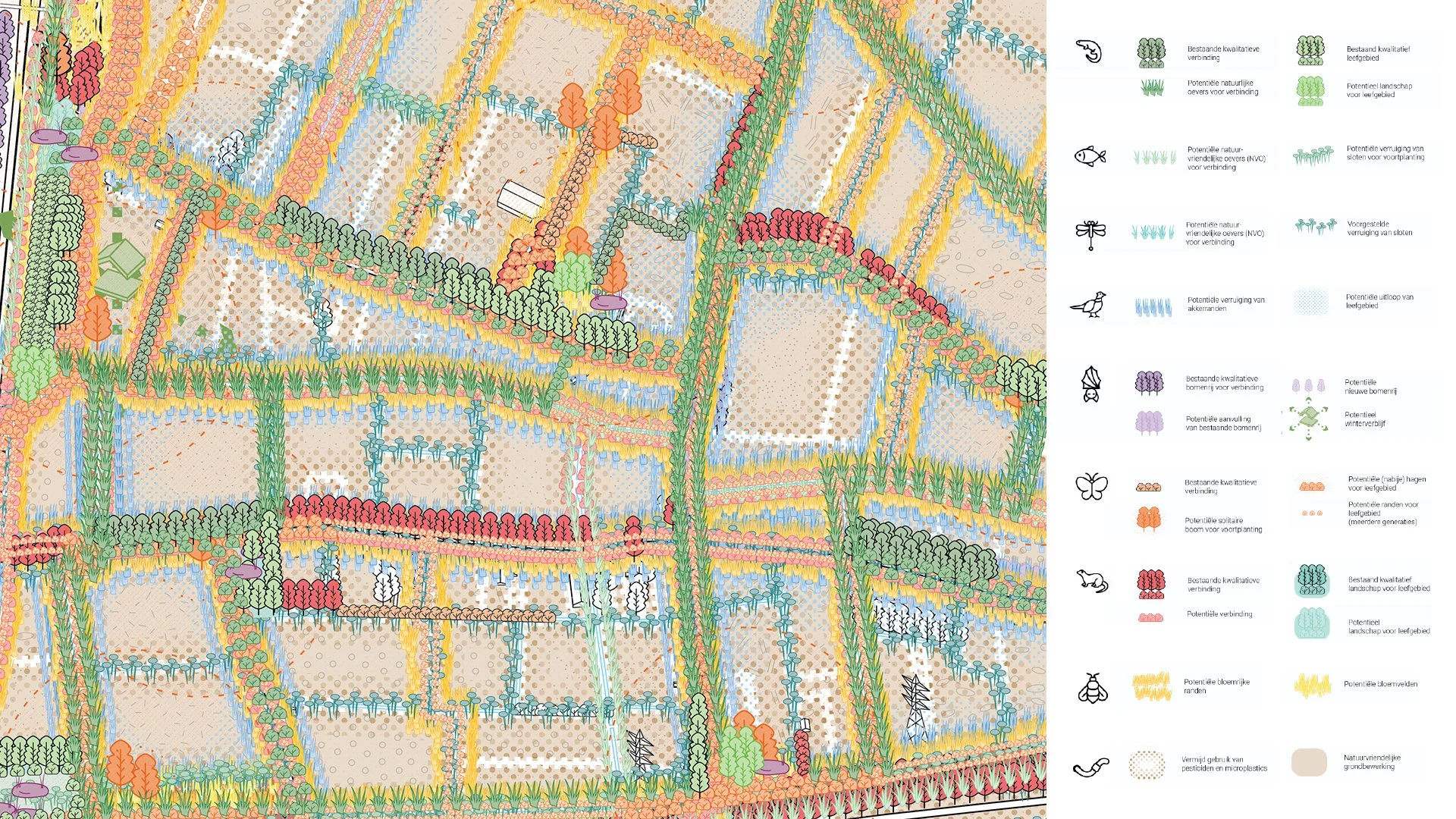WEAVING PARK LINGEZEGEN
RESEARCH BY DESIGN - PARK LINGEZEGEN, NL - 2024-ONGOING
A TERRITORY FULL OF OPPORTUNITIES
Initiated by the Board of Government Advisors of the Netherlands (College van Rijksadviseurs), the Young Innovator programme connects emerging studios with large-scale spatial challenges, including redevelopment, the energy transition, cultural heritage, and climate change. As one of six selected Young Innovators, studio audal developed the proposal ‘Weaving Park Lingezegen’.
Designated as a Green Belt (Rijksbufferzone) in the early 2000s, Park Lingezegen is a 1,700-hectare park situated between Arnhem and Nijmegen, structured into five distinct zones. While both the northern and southern parts of the park function well, the central area—characterised by agricultural fields and its position along the Linge canal—remains underutilised. However, positioned between two rivers, this area holds great potential as a key stepping stone within the broader green-blue network.
The study explores nature-based solutions, introducing ambassador species to establish a landscape where modern agriculture and biodiversity can coexist. By integrating ecological principles, the project aims to create a thriving, resilient environment that supports both human and non-human life. It bets on the ongoing agricultural transition to catalyse the creation of a more nature-inclusive central zone.
At its core, the research by design process revolves around the central question:
"How can all participants, human or not, weave their thread into an all-around nature-inclusive tapestry?"
DUAL TRANSITION STRATEGY
Early analysis revealed that a significant portion of the land in Park Lingezegen is privately owned. The proposed dual strategy highlights the importance of collaboration between public and private stakeholders to enhance biodiversity and support the agricultural transition.
The first component, the ecological landscape strategy, focuses on strengthening ecological connections for ambassador species within the broader green-blue network. This strategy is designed to be implemented on public land, in partnership with public stakeholders, including the park authorities, municipalities, provinces, and the water board. The second component, the nature-inclusive agriculture strategy, explores various approaches to more sustainable farming practices. This transition will be developed in close collaboration with key private stakeholders, such as farmers and local residents. The interface between these two domains presents a valuable opportunity for all stakeholders to contribute to a woven tapestry of ecological and agricultural resilience.
By selecting ambassador species suited to the site, the ecological strategy strengthens both the ‘water en bodem sturend’ principle and the agricultural transition. This approach improves the green network, enhances water resilience, fosters healthy soil, promotes efficient pollination, and strengthens natural pest control—creating a self-reinforcing system with lasting positive effects.
CATALOGUES & PILOT PROJECTS
Developed as design guidelines and participative tool, two catalogues of interventions were produced and illustrated. The landscape catalogue, based on the factsheets for nine ambassador species, provides practical guidance for implementation in the central area of Park Lingezegen. The agricultural transition catalogue is exploring alternative or complementary nature-inclusive farming practices in order to start the discussion with local farmers.
Additionally, a digital interactive toolbox illustrates the potential ecological connections of each ambassador species, it will be shared online and on-site. By layering these pathways, the tapestry of Park Lingezegen emerges, weaving together nature and agriculture into a more resilient, biodiverse landscape.
The following steps are ongoing and plan on the realization of pilot projects both for the public and private areas. 3D drone-scanning and on-site ecological monitoring create the baseline for these pilot projects. This is a unique opportunity to monitor the establishment of a species in a mainly agricultural territory and to study the potential symbiosis between future-proof food production and biodiversity creation.
The complete study is available on the Young Innovator website, or on this link:
Project status
Ongoing
Client
Park Lingezegen
Year
2024 - Ongoing
Location
Park Lingezegen, NL
In collaboration with
Rodrigo L Marin (UX design)
































